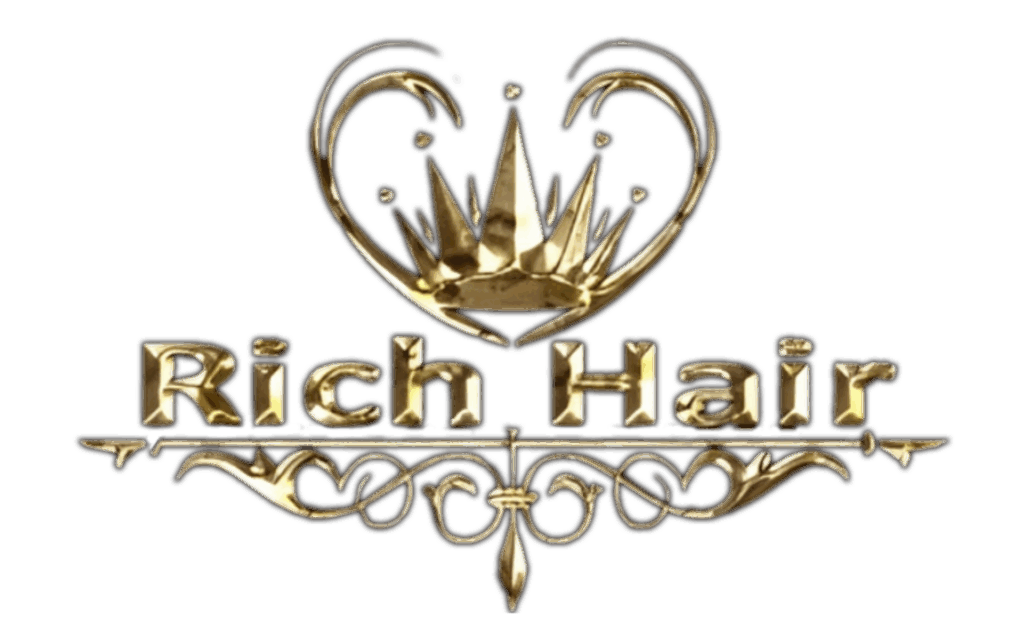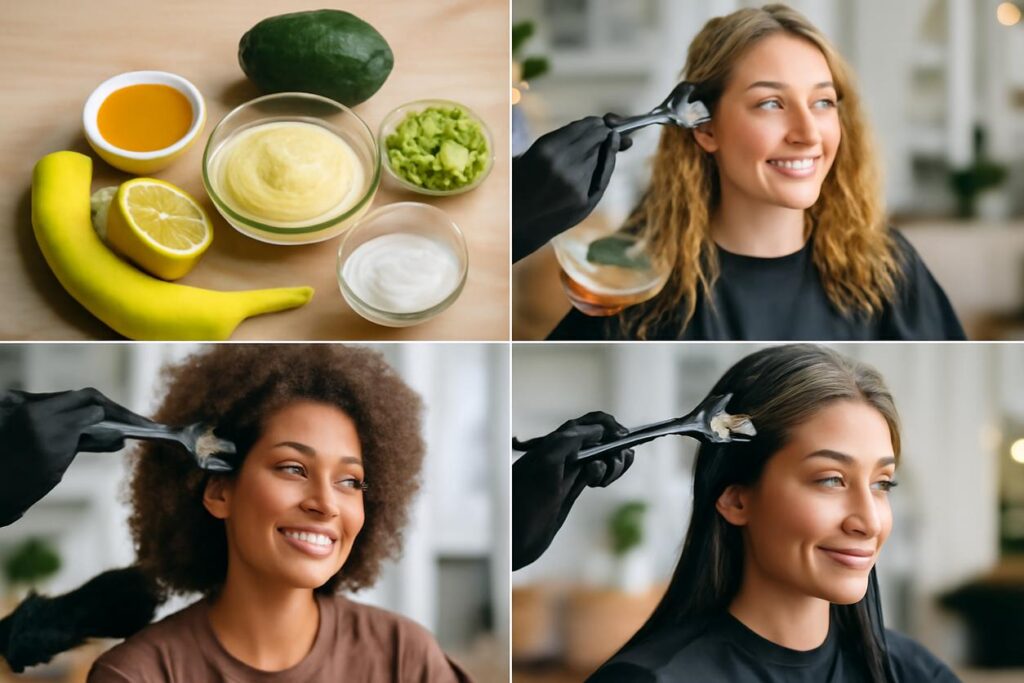The Ultimate Guide to Curly Hair Tips for 2025: From Care to Nutrition
Table of Contents
- Introduction: Embrace Your Curls with Specialised Care
- Understanding Your Unique Curls: Pattern and Porosity
- Building Your Gentle Wash Day Routine
- Hydration is Key: The Foundation of Healthy Curls
- Sealing and Styling for Definition and Hold
- Minimizing Damage: Heat, Tools, and Protective Styles
- Protect Your Curls While You Sleep
- Nourish Your Hair from Within: Nutrition for Strong Curls
- Simple and Effective At-Home Treatments
- Decoding Product Labels: What to Look For and Avoid
- Sample Routines by Curl Type
- Troubleshooting Common Curl Concerns
- Further Reading and Resources
- Summary: Your Key Takeaways for Fabulous Curls
Introduction: Embrace Your Curls with Specialised Care
Welcome to the ultimate guide of curly hair tips for anyone ready to unlock their hair’s true potential. If you have waves, curls, or coils, you know that your hair is beautifully unique. The very structure of a curly hair strand, with its twists and turns, makes it more prone to dryness, frizz, and breakage than straight hair. This is because natural oils from the scalp have a harder time traveling down the hair shaft. That’s why generic hair advice often falls flat. Your curls don’t need to be “tamed”—they need to be understood and nourished. This guide provides practical, actionable curly hair tips that combine a solid routine with nutrition and simple at-home care to help you achieve the healthy, defined curls you’ve always wanted.
Understanding Your Unique Curls: Pattern and Porosity
The first step in any successful curl journey is getting to know your hair. Two of the most important factors are your curl pattern and your hair porosity. Understanding these will guide every choice you make, from products to styling techniques.
Identifying Your Curl Pattern
Curl patterns are typically categorized using a number and letter system, from wavy (Type 2) to curly (Type 3) to coily (Type 4). While many people have multiple patterns on their head, identifying your dominant type is a helpful starting point.
| Type | Category | Description |
|---|---|---|
| Type 2 | Wavy | Characterised by ‘S’-shaped waves. 2A is fine and loose, 2B is more defined from the mid-lengths, and 2C has more defined waves starting from the root and can be prone to frizz. |
| Type 3 | Curly | Features well-defined, springy curls. 3A has large, loose curls; 3B has tighter, springier curls (like a Sharpie); and 3C has dense, corkscrew curls (like a pencil). |
| Type 4 | Coily | Consists of tightly packed coils or zig-zag patterns. 4A has visible ‘S’-patterned coils, 4B has a ‘Z’ shape with sharp angles, and 4C has the tightest, most densely packed coils with less visible definition. |
What is Hair Porosity?
Hair porosity refers to your hair’s ability to absorb and retain moisture. It’s just as important as your curl pattern.
- Low Porosity: The hair cuticle is tightly packed. Hair takes a long time to get wet and a long time to dry. It’s prone to product build-up because products tend to sit on top of the hair rather than being absorbed.
- Medium Porosity: The cuticle is looser. Hair absorbs and retains moisture well. It’s often considered the “ideal” porosity for easy maintenance.
- High Porosity: The cuticle has gaps or holes, which can be genetic or due to damage. Hair absorbs moisture quickly but also loses it just as fast, leading to frizz and dryness.
A simple test: Take a clean strand of hair and place it in a glass of water. If it floats, you likely have low porosity. If it sinks slowly, you have medium porosity. If it sinks quickly, you have high porosity.
Building Your Gentle Wash Day Routine
How you wash your hair is the foundation of your entire routine. For curls, the goal is to cleanse without stripping away essential moisture.
How Often Should You Wash Curly Hair?
Unlike straight hair, curly hair rarely needs to be washed daily. Over-washing can lead to dryness and frizz. Here’s a general guideline:
- Wavy (Type 2): Every 2-4 days.
- Curly (Type 3): Every 3-7 days.
- Coily (Type 4): Every 7-14 days.
Listen to your hair and scalp. If you have an oily scalp, work out frequently, or use a lot of styling products, you may need to wash more often.
The Right Way to Wash and Condition
One of the best curly hair tips is to rethink the washing process itself. Focus the shampoo on your scalp only, where oil and dirt accumulate. Let the suds run down your hair strands as you rinse. When conditioning, focus the product from the mid-lengths to the ends, where hair is the driest.
- Sulfate-Free Shampoo: Use a gentle, sulfate-free cleanser to avoid stripping natural oils.
- Co-Washing: Consider replacing your shampoo with a cleansing conditioner (co-wash), especially if you have very dry or coarse hair. You can alternate between a co-wash and a sulfate-free shampoo.
- Detangle with Conditioner: Never detangle curly hair when it’s dry. The best time is in the shower when it’s coated with conditioner. Use your fingers or a wide-tooth comb to gently work through knots from the bottom up.
Hydration is Key: The Foundation of Healthy Curls
Curls thrive on moisture. After washing, it’s crucial to layer hydrating products to keep your hair soft, defined, and frizz-free.
Leave-In Conditioners and Water-Based Products
Water is the ultimate hydrator. Always apply your styling products to soaking wet hair. This helps trap the water in the hair shaft and ensures even product distribution. A water-based leave-in conditioner is a non-negotiable first step for most curl types. It provides a baseline of moisture and makes your styling products work more effectively.
Sealing and Styling for Definition and Hold
Once your hair is hydrated, the next step is to seal in that moisture and define your curl pattern. This is where styling products like creams, gels, and oils come in.
Choosing the Right Stylers: Oils, Creams, and Gels
- Creams: Provide moisture and soft definition. They are great for wavy and curly types who want to reduce frizz without a crunchy hold.
- Gels and Mousses: Offer stronger hold and create a “cast” around the curls. This cast protects the curl pattern as it dries and can be gently scrunched out later to reveal soft, defined curls.
- Oils: Best used to seal in moisture after applying a leave-in or cream, or to scrunch out the gel cast. Lighter oils work for finer hair, while heavier oils and butters are great for coily hair.
Popular Styling Methods for 2025
How you apply your products matters. Here are a few techniques gaining popularity for their effectiveness:
- Raking: Use your fingers like a rake to distribute product through your hair.
- Praying Hands: Rub product between your palms and smooth it down sections of your hair, as if your hair is between hands in prayer. This helps smooth the cuticle and reduce frizz.
- Scrunching: Cup your ends and gently scrunch upwards towards the root. This encourages curl formation and volume.
Minimizing Damage: Heat, Tools, and Protective Styles
One of the most important curly hair tips is to be gentle. Curls are fragile, and mechanical and heat damage can quickly ruin your pattern.
Using Heat Safely
If you must use heat, do so sparingly. When blow-drying, always use a diffuser attachment on a low heat and low speed setting. A diffuser disperses the airflow to gently dry your curls, enhancing volume and definition while minimizing frizz and heat damage. Always apply a heat protectant first.
Protective Styling for Curl Health
Protective styles are hairstyles that tuck away your ends, protecting them from friction, weather, and manipulation. They are fantastic for retaining length and moisture. Examples include braids, twists, buns, and updos.
Protect Your Curls While You Sleep
Your nighttime routine is crucial for preserving your curls for the next day. Tossing and turning on a cotton pillowcase can cause friction, leading to frizz, tangles, and breakage.
- Silk or Satin Pillowcase: The smooth surface reduces friction, helping your hair glide instead of snag.
- Satin Bonnet or Scarf: Wrapping your hair in a bonnet or scarf protects your curls and keeps them contained.
- The “Pineapple”: Loosely gather your hair into a high ponytail on top of your head. This protects the curls at the back and sides from getting squashed while you sleep.
Nourish Your Hair from Within: Nutrition for Strong Curls
Healthy hair starts from the inside. A balanced diet rich in specific vitamins and minerals can significantly impact the strength, growth, and overall health of your hair follicles. For more in-depth information, you can explore this comprehensive review on hair nutrition.
Essential Vitamins and Minerals
- Biotin: Supports keratin production, a key protein in hair. Found in eggs, nuts, and whole grains.
- Iron: An iron deficiency can lead to hair loss. Found in spinach, lentils, and red meat.
- Vitamin C: Helps your body absorb iron and produce collagen. Found in citrus fruits, bell peppers, and strawberries.
- Protein: Your hair is made of protein, so ensuring adequate intake is vital. Sources include fish, chicken, beans, and tofu.
- Zinc: Plays an important role in hair tissue growth and repair. Found in pumpkin seeds, lentils, and chickpeas.
Hydration and Diet
Just as you hydrate your hair externally, you need to hydrate your body internally. Drinking plenty of water is essential for healthy hair. A well-rounded diet is one of the most effective long-term curly hair tips you can adopt.
Simple and Effective At-Home Treatments
You don’t need expensive treatments to give your hair a boost. Many effective masks and scalp treatments can be made with ingredients from your kitchen.
DIY Hydrating Hair Masks
Once or twice a month, treat your hair to a deep conditioning mask. A great simple option is to mash half an avocado and mix it with a tablespoon of olive oil and a tablespoon of honey. Apply to clean, damp hair, leave on for 20-30 minutes, and then rinse thoroughly.
Scalp Care for Better Growth
A healthy scalp is the foundation for healthy hair. Gently massaging your scalp for a few minutes each day can stimulate blood flow to the follicles, promoting growth. You can do this with your fingertips or add a drop of a lightweight oil like jojoba oil.
Decoding Product Labels: What to Look For and Avoid
Navigating the world of hair products can be confusing. Knowing which ingredients benefit curls and which can cause harm is a game-changer.
Ingredients to Embrace
- Humectants: Attract moisture (e.g., glycerin, honey).
- Emollients: Smooth the hair cuticle (e.g., shea butter, avocado oil).
- Proteins: Strengthen the hair shaft (e.g., keratin, silk amino acids). Use with caution if your hair is protein-sensitive.
- Natural Oils: Coconut, olive, argan, and jojoba oils are fantastic for sealing and adding shine.
Ingredients to Use with Caution or Avoid
- Sulfates (e.g., Sodium Lauryl Sulfate): Harsh detergents that can strip natural oils.
- Drying Alcohols (e.g., Alcohol Denat, Isopropyl Alcohol): Can be very drying for curly hair. Note that fatty alcohols (like Cetyl Alcohol) are good and act as emollients.
- Silicones (non-water-soluble): Can cause build-up over time, weighing down curls (e.g., Dimethicone).
Sample Routines by Curl Type
Here are some sample routines to give you a starting point. Remember to adjust based on your hair’s specific needs.
| Routine Type | Wavy (Type 2) | Curly (Type 3) | Coily (Type 4) |
|---|---|---|---|
| Wash Day | Cleanse with a sulfate-free shampoo. Condition and detangle. Apply a lightweight leave-in and mousse or light gel to wet hair. Scrunch and air-dry or diffuse. | Co-wash or use a moisturizing shampoo. Deep condition. Apply a leave-in conditioner and a curl cream. Layer with a medium-hold gel using praying hands. Scrunch and diffuse or air-dry. | Pre-poo with oil before washing. Cleanse with a moisturizing shampoo. Deep condition with heat (a warm towel or cap). Apply leave-in, a rich cream, and seal with an oil (L.C.O. method). Style into twists or braids to dry. |
| Morning Refresh | Lightly spray with water. Scrunch to reactivate product. If needed, add a small amount of mousse to frizzy areas. | Mix water and a bit of leave-in in a spray bottle. Mist hair to dampen, not soak. Smooth over frizzy sections and scrunch to reform curls. | Lightly spritz with water or a refreshing spray. Apply a small amount of oil or cream to ends to add moisture and shine. Fluff at the roots for volume. |
Troubleshooting Common Curl Concerns
Even with the best routine, you might face some challenges. Here are a few quick curly hair tips for common problems.
Fighting Frizz
Frizz is often a sign that your hair needs more moisture. Ensure you are using a leave-in conditioner, applying stylers to very wet hair, and sealing with a gel or oil. Also, avoid touching your hair while it’s drying.
Dealing with Limp Curls
If your curls are weighed down, you might be using products that are too heavy or have product build-up. Try a clarifying shampoo once a month and opt for lighter products like mousses and lotions instead of heavy butters and creams.
Addressing Breakage
Breakage can be caused by dryness, rough handling, or a need for protein. Incorporate regular deep conditioning treatments and be extra gentle when detangling. If your hair feels overly soft and mushy, consider a protein treatment.
Further Reading and Resources
Your curl journey is one of continuous learning. For more general advice on maintaining healthy hair, the NHS offers excellent hair care guidance. For those interested in professional products and tools that cater to diverse hair types, you can explore resources like Rich Hair UK.
Summary: Your Key Takeaways for Fabulous Curls
Caring for curly hair is a rewarding journey of understanding and nurturing what makes your hair unique. By implementing these curly hair tips, you can build a routine that works for you.
- Know Your Hair: Identify your curl pattern and porosity to choose the right products and techniques.
- Prioritize Moisture: Curls are naturally thirsty. Focus on hydration at every step, from washing to styling.
- Be Gentle: Minimize heat, handle your hair with care, and protect it at night.
- Nourish from Within: A balanced diet and plenty of water are fundamental for strong, healthy hair.
- Consistency is Key: Stick with your routine to see the best results. Don’t be afraid to experiment and find what your curls love most.






